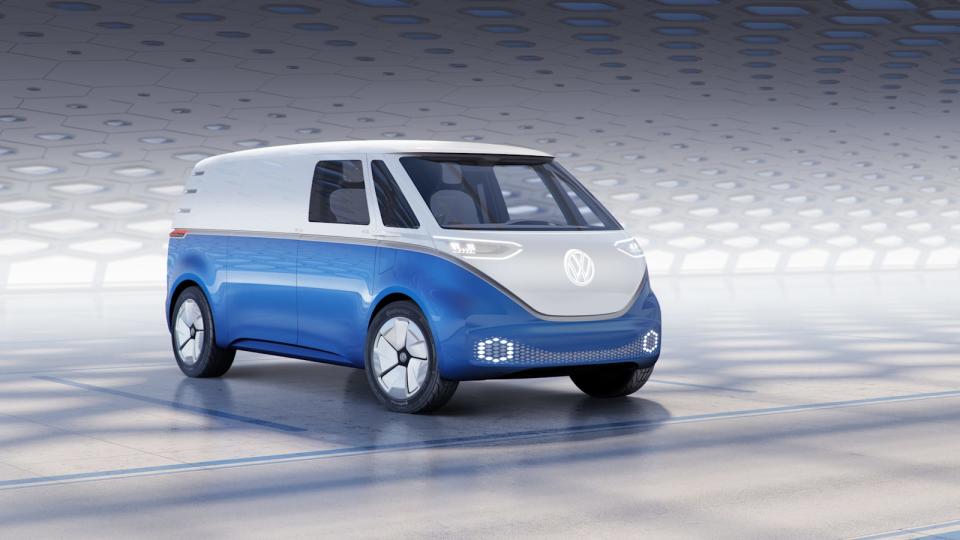VW ID. Buzz Preview Drive | VW bus returns* and it's electric

MILTON KEYNES, England — Before climbing into the VW ID.Buzz for a first drive in Volkswagen’s reborn and electrified bus, let’s turn back the clock to see how we finally got to this point. And acknowledge that Americans are going to be waiting even longer.
In 1950, the first Volkswagen buses were imported to the United States. History doesn’t recall exactly when these clattering, air-cooled vans first became a symbol of American counterculture, but by the Woodstock Festival in 1969 they were parked up in the Bethel farm field complete with “Make Love Not War” and “Ban the Bomb” slogans painted on the flanks.
In the 1970s, Gilbert Shelton’s Fabulous Furry Freak Brothers traveled in a VW bus, and in 1995, when Jerry Garcia, frontman of The Grateful Dead died, Volkswagen America ran a simple line drawing advertisement of the first-generation van with a single teardrop coming out of one headlamp.
Cheap and economical, and unlike anything else at the time, the VW bus was an antidote to the gargantuan V8 engines of the period. These were the vans in which we stopped working for The Man and tuned in and dropped out before tripping off to San Jose or Big Sur to meet the girl or boy of our dreams. Or so we thought at the time. Until 2014, the original VW bus was still in production in Brazil and still much prized by surfers and camping types across the world, which really was some endorsement of the original concept.


In 2001, I saw some of this special relationship when VW showed the Charles Ellwood design for a born-again Bus (or Bulli as the Germans reverently call it) at the Detroit Auto Show. This was seven years after the Concept 1 design for a reborn Beetle had been shown, also in Detroit, and there was an adoring reception from the press and American baby boomers clamoring for it to be built.
The feedback was strong enough that the following year, VW confirmed it would put the Microbus into production complete with translucent rubber floors and cute first-generation front end. Then it was canceled.
But this was an itch that VW refused to stop scratching. In 2011 there was the Bulli concept (above left), in 2016 we were treated to the Budd-e (above right), and then in 2017 we saw the concept version of this van, the ID.Buzz (below).
We should be strictly honest here and tell you that VW still produces descendants of the VW van in the form of the T6 commercial and the T7 hybrid, which bear a startling resemblance to the ID.Buzz, but those aren’t electric. In fact, the market for electric commercials is primed for rapid expansion. The Ford E-Transit will go on sale early this year, with an electric Ram ProMaster following at some point later in 2022. Meanwhile, Amazon-backed Rivian has a contract to build 100,000 electric delivery vans, while GM’s BrightDrop is supplying Walmart and FedEx with electric vans.

The basis of the ID.Buzz is, of course, the MEB electronic architecture, which underpins a new generation of VW battery electric cars: VW ID.4 and ID.3, plus the Skoda Enyaq and Cupra Born sold in other markets.
VW is planning two versions of the ID.Buzz: the bus, which will be called ID.Buzz and will cost around £50,000 when it goes on sale (about $67,000); and the ID.Buzz Cargo panel-van version, which will cost around £42,000 ($56,000). Start of production is this spring, with sales commencing this fall in the U.K. and Europe.
In time there will be a longer-wheelbase version with a larger and more powerful battery. That’s the van the Americas will get in 2025, and there will also be an ID.California camper, too, though that’ll be expensive.

 Yahoo Autos
Yahoo Autos 
